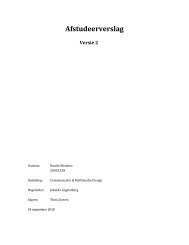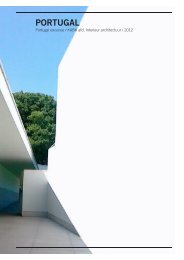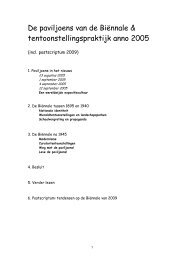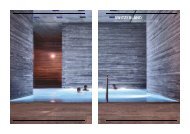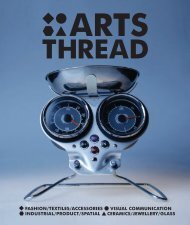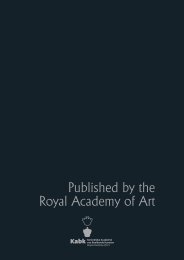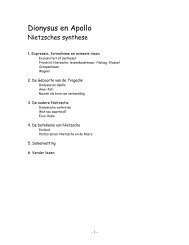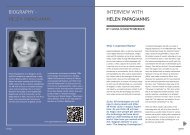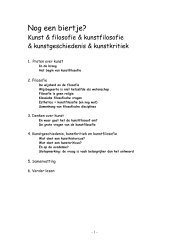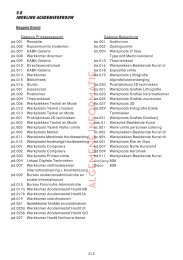download LR pdf - Kabk
download LR pdf - Kabk
download LR pdf - Kabk
Create successful ePaper yourself
Turn your PDF publications into a flip-book with our unique Google optimized e-Paper software.
that possessed similarities, through which thepossibility for visual synchronicities existed.Themes of intrusions and chance encounters areat play in Hallucinatory AR, inspired in part bySurrealist artist Max Ernst. In What is the Mechanismof Collage? (1936), Ernst writes:One rainy day in 1919, finding myself on a villageon the Rhine, I was struck by the obsessionwhich held under my gaze the pages of an illustratedcatalogue showing objects designed foranthropologic, microscopic, psychologic, mineralogic,and paleontologic demonstration. ThereI found brought together elements of figurationso remote that the sheer absurdity of that collectionprovoked a sudden intensification ofthe visionary faculties in me and brought forthan illusive succession of contradictory images,double, triple, and multiple images, piling upon each other with the persistence and rapiditywhich are particular to love memories and visionsof half-sleep (p. 427).Of particular interest to my work in exploringand experimenting with Hallucinatory AR wasErnst’s description of an “illusive succession ofcontradictory images” that were “brought forth”(as though independent of the artist), rapidlymultiplying and “piling up” in a state of “halfsleep”.Similarities can be drawn to the processof the seemingly disparate AR images jarringlycoming in and out of view, layered atop oneanother.example of the technology failing. To the artist,however, there is poetry in these glitches, withnew possibilities of expression and new visualforms emerging.On the topic of glitches and accidents, I’d like toreturn to Méliès. Méliès became famous for thestop trick, or double exposure special effect,a technique which evolved from an accident:Méliès’ camera jammed while filming the streetsof Paris; upon playing back the film, he observedan omnibus transforming into a hearse. Ratherthan discounting this as a technical failure, orglitch, he utilized it as a technique in his films.Hallucinatory AR also evolved from an accident,which was embraced and applied in attemptto evolve a potentially new visual mode in themedium of AR. Méliès introduced new formalstyles, conventions and techniques that werespecific to the medium of film; novel styles andnew conventions will also emerge from AR artistsand creative adventurers who fully embracethe medium.[1] Comte de Lautreamont’s often quoted allegory,famous for inspiring both Max Ernst and AndrewBreton, qtd. in: Williams, Robert. “Art Theory: AnHistorical Introduction.” Malden, MA: BlackwellPublishing, 2004: 197“As beautiful as the chanceencounter of a sewingmachine and an umbrellaon an operating table.”Comte de LautréamontOne wonders if these visual accidents are whatthe future of AR might hold: of unwelcomeglitches in software systems as Bruce Sterlingdescribes on Beyond the Beyond in 2009; orperhaps we might come to delight in the visualpoetry of these Augmented hallucinations thatare “As beautiful as the chance encounter of asewing machine and an umbrella on an operatingtable.” 1To a computer scientist, these ‘glitches’, asapplied in Hallucinatory AR, could potentiallybe viewed or interpreted as a disaster, as an18Picture: Pippin Lee19



